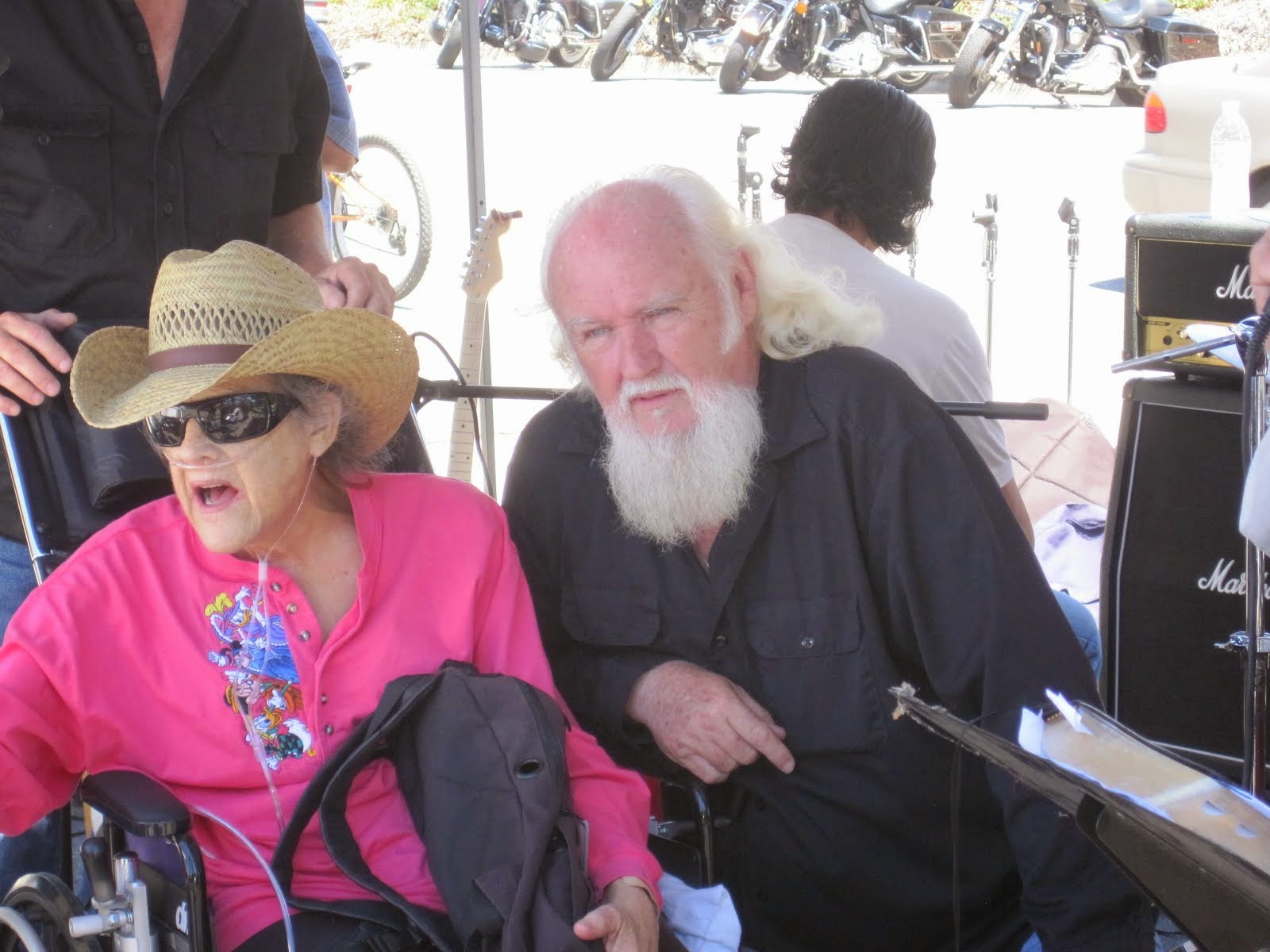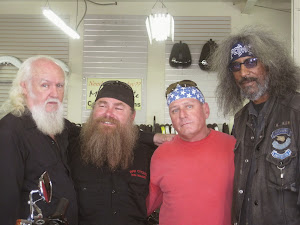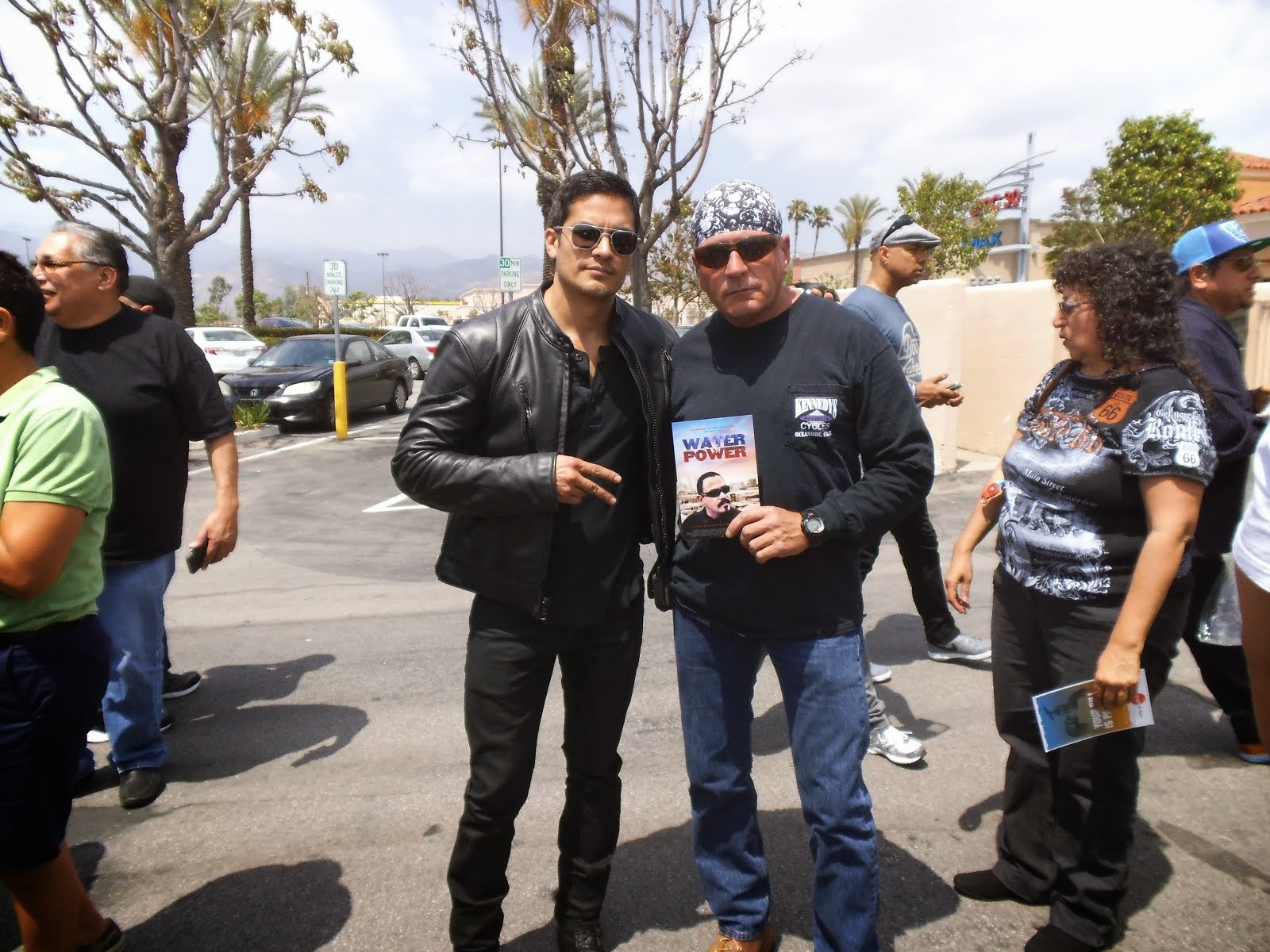OFF THE WIRE
The high cost of traffic crashes
By Gary Richards
-------- 71% of costs come from cars/suvs, vs 12% from bikers . but
pedestrians are right up there (with bikers ) . . .
grichards@mercurynews.com
Aug 30:
costs of injuries from motor vehicle accidents
The cost of motor vehicle crashes averages out to nearly $500 a year for
every licensed driver in the United States in medical care and productivity
losses, according to a recent study -- costs that could be lowered if more
states implemented seat-belt, cell-phone and drunken-driving crackdowns.
The study, released Wednesday by the Centers for Disease Control and
Prevention, said the cost associated with injuries from crashes exceeded $99
billion nationwide. Factor in higher insurance premiums, taxes and travel
delays and the National Highway Traffic Safety Administration concludes the
price tag is more than double that, at $230.6 billion.
"This study highlights the magnitude of the problem of crash-related
injuries from a cost perspective," said Grant Baldwin, director of CDC's
Division of Unintentional Injury Prevention, "and the numbers are
staggering."
CDC researchers used 2005 data because, at the time of the study, it
provided the most current source of national fatal and nonfatal injury and
cost data from multiple sources.
Traffic injuries and deaths have been falling, and in 2008 they were at
their lowest level since 1961. But traffic accidents remain the ninth
leading cause of deaths worldwide. By 2030, they are expected to become the
fifth leading cause of death, outranking diabetes, HIV/AIDS and hypertensive
heart disease.
The CDC report said safety gains in Europe have exceeded those in the U.S.
The blame, the study
concluded, falls on the many states that don't require helmets for
motorcyclists, lack seat belt laws that allow police to ticket people solely
for being unbuckled, lax laws involving teens and rules that fail to monitor
motorists convicted of driving under the influence of alcohol or drugs.
Many European countries have crash death rates of 7 to 9 per 100,000 people,
which is a decline of more than 60 percent since the early 1980s. In the
United States, there are 15 to 16 fatalities per 100,000, a 35 percent
decline over the same period.
Safety advocates give the Golden State mostly good reviews on efforts to
lower those numbers.
"California has some of the best highway safety programs and laws," said
Jonathan Adkins, communications director of the Governors Highway Safety
Association, citing statewide crackdowns on cell phone use, seat-belt
compliance and sobriety checkpoints. "But there is room for improvement."
One possible improvement, he said, would be to prohibit teenagers from
driving with other teens in the car until they reach 18, instead of just the
first year they have a license.
"Seven states plus D.C. extend (teen rules) until age 18," Adkins said.
"There's research that shows that the older you extend it, the better, as it
gives the brain more time to develop and for judgment to improve."
California has been slow to require that all drunken-driving offenders use
an ignition interlock device to prevent them from driving. That idea is now
being tested in Alameda and three other counties.
The seat-belt approach in California has been one of the most successful in
the land. National insurance studies indicate that wearing safety belts cuts
the risk of auto injury or fatality in half. The message seems to have sunk
in.
Nearly 96 percent of California drivers and their passengers buckle up,
compared with 40 percent before the tougher law went into effect in 1994.
The state Office of Traffic Safety estimates that 1,300 lives a year have
been saved since 2005.
The average seat belt use in the nation is 83 percent.
To further reduce accidents, some say attention needs to be paid to
unlicensed and uninsured motorists.
"My concern is that many of these drivers don't want to be contacted by the
police for fear of a citation and/or impound," said Lt. Chris Monahan, of
the San Jose Police Department's traffic unit. "Because they are unlicensed
and uninsured, there is a high possibility they may hit and run. Those costs
are then passed on to society rather than the at-fault driver."
With Labor Day approaching, police throughout Santa Clara County are now
involved in a drunken-driving campaign. A crackdown on driving in school
zones is planned for next month, and three weeks ago, drivers using handheld
cell phones were the target during two days, with more than 2,500 tickets
issued in the nine Bay Area counties.
Drivers may see more of that.
New York and Connecticut are conducting pilot programs called "Phone in One
Hand. Ticket in the Other." These could be copied in California and
elsewhere. Congress, said Adkins, is expected to set aside more funds for
such campaigns.
"The crackdowns," he said, "are effective at raising awareness about the
dangers of distracted driving."
And, perhaps, at lowering the number of crashes and the pain they cause,
both human and financial.
Have you been in a crash? How much did it cost for auto repairs, medical
care and lost time at work? Contact Gary Richards at 408-920-5335.
Accident breakdown
Incidence and total lifetime costs of fatal and nonfatal accidents
involving motor vehicles:
Mercury News
Category
Percent of injuries
Percent of costs
Motor vehicle occupants
76% Percent of injuries
71% Percent of costs
Motorcyclists
6% Percent of injuries
12% Percent of costs
Pedes-
trians
5% Percent of injuries
10% Percent of costs
Bicyclists
13% Percent of injuries
6% Percent of costs
Ages 15-24
28% Percent of injuries
31% Percent of costs
Source: Centers for Disease Control
Mercury News
http://www.mercurynews.com/mr-roadshow/ci_15917221
skip to main |
skip to sidebar




Bill & Annie

Art Hall & Rusty


NUFF SAID.......


































































OOHRAH

ONCE A MARINE,ALWAYS A MARINE

GIVING BACK


MOUNT SOLEDAD














BIKINI BIKE WASH AT SWEETWATER










FRIENDS





BILL,WILLIE G, PHILIP










GOOD FRIENDS


hanging out

brothers


GOOD FRIENDS

Good Friends

Hanging Out




Bill & Annie
Art Hall & Rusty
Art Hall & Rusty


NUFF SAID.......



















NUFF SAID......



























Mount Soledad




BALBOA NAVAL HOSPITAL
RUSTY DANNY

ANNIE KO PHILIP

PHILIP & ANNIE

OUT & ABOUT

OOHRAH...

OOHRAH
ONCE A MARINE,ALWAYS A MARINE

ONCE A MARINE,ALWAYS A MARINE
American Soldier Network GIVING BACK

GIVING BACK
CATHY & BILL
PHILIP & DANNY & BILL

MOUNT SOLEDAD
bills today
EMILIO & PHILIP
WATER & POWER
WATER & POWER
bootride2013



BIKINI BIKE WASH AT SWEETWATER







ILLUSION OPEN HOUSE

FRIENDS


GOOD FRIENDS



BILL,WILLIE G, PHILIP









GOOD FRIENDS

GOOD FRIENDS
Friends
- http://www.ehlinelaw.com/losangeles-motorcycleaccidentattorneys/
- Scotty westcoast-tbars.com
- Ashby C. Sorensen
- americansoldiernetwork.org
- blogtalkradio.com/hermis-live
- davidlabrava.com
- emiliorivera.com/
- http://kandymankustompaint.com
- http://pipelinept.com/
- http://womenmotorcyclist.com
- http://www.ehlinelaw.com
- https://ammo.com/
- SAN DIEGO CUSTOMS
- www.biggshd.com
- www.bighousecrew.net
- www.bikersinformationguide.com
- www.boltofca.org
- www.boltusa.org
- www.espinozasleather.com
- www.illusionmotorcycles.com
- www.kennedyscollateral.com
- www.kennedyscustomcycles.com
- www.listerinsurance.com
- www.sweetwaterharley.com

Hanging out

hanging out
Good Friends

brothers
GOOD FRIENDS

EMILIO & SCREWDRIVER

GOOD FRIENDS
Danny Trejo & Screwdriver

Good Friends
Navigation
Welcome to Bikers of America, Know Your Rights!
“THE BIKERS OF AMERICA, THE PHIL and BILL SHOW”,
A HARDCORE BIKER RIGHTS SHOW THAT HITS LIKE A BORED AND STROKED BIG TWIN!
ON LIVE TUESDAY'S & THURDAY'S AT 6 PM P.S.T.
9 PM E.S.T.
CATCH LIVE AND ARCHIVED SHOWS
FREE OF CHARGE AT...
BlogTalkRadio.com/BikersOfAmerica.
Two ways to listen on Tuesday & Thursday
1. Call in number - (347) 826-7753 ...
Listen live right from your phone!
2. Stream us live on your computer: http://www.blogtalkradio.com/bikersofamerica.
A HARDCORE BIKER RIGHTS SHOW THAT HITS LIKE A BORED AND STROKED BIG TWIN!
ON LIVE TUESDAY'S & THURDAY'S AT 6 PM P.S.T.
9 PM E.S.T.
CATCH LIVE AND ARCHIVED SHOWS
FREE OF CHARGE AT...
BlogTalkRadio.com/BikersOfAmerica.
Two ways to listen on Tuesday & Thursday
1. Call in number - (347) 826-7753 ...
Listen live right from your phone!
2. Stream us live on your computer: http://www.blogtalkradio.com/bikersofamerica.
Good Times
Hanging Out

Key Words
- about (3)
- contact (1)
- TENNESSEE AND THUNDER ON THE MOUNTAIN (1)
- thinking (1)
- upcoming shows (2)
Blog Archive
-
▼
2010
(4242)
-
▼
August
(197)
- How low can LE stoop to cover for a fellow officer?
- California Legislature passes Toll Road Privacy Bill
- Bikies and triads in waterfront drug conspiracy
- Some Stats and some Propaganda
- Parents Protest on First Day of School in Morton;
- Craigslist seller shot over motorcycle
- CHP's motorcycle grant strives to save lives
- ACLU wants Denver police to reopen probe into traf...
- Man fires pepper spray on protesters outside Marin...
- NY motorcyclists fight back
- Choppers seized by police
- Jesup bar fight results in numerous arrests
- Bandidos face court for assault
- Helmet failures
- At Least 4 Injured in Motorcycle Gang Shootout
- 27Arrested After Rival Motorcycle Gang Shootout
- 5 Men Charged in Motorcycle Gang Shootout
- Townspeople Talk About Motorcycle Gang Shootout
- Armed police stamp out illegal gang bar
- Fourth Amendment Rights
- GPS - Fed court allows DEA to violate 4th amendment.
- Promising footy star trapped in gang war
- This old bikie never gives up the fight
- Crime data leaked to bikie gangs
- JUST THINKING
- Court allows agents to secretly put GPS trackers o...
- iPhones Help Cops Solve Crimes By Capturing Everyt...
- 'ATTIKA 7' @ VIPER ROOM, Hollywood - Sept. 3
- 4th Amendment Violating Mobile X-Ray Scanners Hit ...
- One arrest, 39 > > tickets, 7 vehicles removed fro...
- Ridin' Safe with Vicki By Vicki Sanfelipo
- Hells Angels and Vagos Motorcycle Gangs in Arizona...
- Sons of Anarchy
- ~Man claims he was kidnapped, assaulted by motorcy...
- BREAKING NEWS: Charges filed in biker gang shooting
- Straub: IMPD commanders failed to act at fatal wreck
- INDIANA: State orders CVS to preserve surveillance...
- Actors arrest brings drama to motorcycle show
- Hells Angels drug-dealing suspect nabbed
- Ex-Hells Angel: 'Sons of Anarchy' Was MY Idea!
- INDIANA:Outrage on officer involved in motorcycle ...
- CALIFORNIA:Stolen motorcycle parts, other items wo...
- 'Sons Of Anarchy' Star Arrested for Assaulting Cop
- INTERNATIONAL NEWS:Passions rev up in debate over ...
- SPECIAL ANNOUNCEMENTS:
- Front Page News news@sundayworld.com,BIKER WARS
- KENTUCKY:Man slain outside western Louisville moto...
- Biker Violence Hits Close to Home for AAB Writer
- Rival motorcycle gangs clash in shootout
- ARIZONA:bullets-fly-between-motorcycle-gangs
- INDIANA: Protecting there own,WTF
- Motorcycle Gangs Shoot It Out on Yuma Drive in Chi...
- SPECIAL ANNOUNCEMENTS:The American Civil Liberties...
- Coast police target Rebels gang, Australia
- Arizona police nab 27 after biker gang shootout
- RECALLS:Massive Salmonella recall of eggs is getti...
- New Details Released In Biker Gang Shootout
- Man slain outside western Louisville motorcycle cl...
- Officers demoted for "mishandling" fatal crash inv...
- Additional officers take to Ontario streets for mo...
- GET YOUR FLAG READY!
- August 10 Loud pipes are protection for those on m...
- Biker Shootout Disrupts Small Arizona Town
- The power of the badge
- Funeral for Hells Angel in White Plains
- MAINE:Loud Motorcycles Outlawed in Maine
- From Indiana,Are there two sets of standards? One ...
- CHP to step up motorcycle enforcement in North County
- CA's finest hits pedestrian!
- ACLU challenges law barring recording of police
- even the bee`s dont like cops
- Dash-mounted cameras would help control rogue bikers
- Rebels member said 'I think I got one' after Bandi...
- Police probe bikie link after raid
- Legally Blind Woman Sentenced To Prison In Biker’s...
- Rebels member said 'I think I got one' after Bandi...
- Bikie breaks golden rule of silence in fatal airpo...
- St. Louis County links three slayings to motorcycl...
- Bikie admitted Sydney Airport killing, court told
- Bandido shot after races dispute: crown
- November Pay Cut
- MRF E-MAIL NEWS Motorcycle Riders Foundation
- Sacramento, CA:
- No fear where notorious motorcycle gang Hells Ange...
- Lake Elsinore Police Department Enforcement Campaign
- Police nab speeding bikie boss Derek Wainohu
- Fear of gang violence after bikies attend Chaouk f...
- Police fear bikie gangs could join feud
- Man arrested over rape at Bulldog Bash
- Bulldog Bash 2010: Rated!
- Police warn against Chaouk revenge attacks
- Former gang members speak in Oroville
- Gang squad keeps tabs on bikies during ride
- Biker charged in shooting death of Highwaymen club...
- Justice in America
- Shots fired at gang member's home
- Deirdre Purdy: Government's case against Pagans
- Original Gypsy returns to Rally
- Motorcycle club donates $257,000 to children’s hos...
- Gangs squad HQ for Sydney: Abbott
-
▼
August
(197)
Bikers of America, Know Your Rights!... Brought to you by Phil and Bill
Philip, a.k.a Screwdriver, is a proud member of Bikers of Lesser Tolerance, and the Left Coast Rep
of B.A.D (Bikers Against Discrimination) along with Bill is a biker rights activist and also a B.A.D Rep, as well, owner of Kennedy's Custom Cycles
